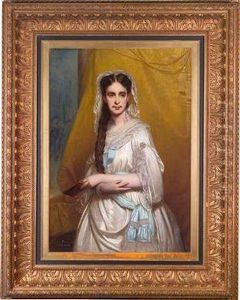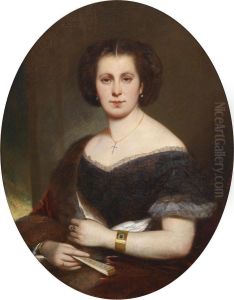Josef Matthaus Aigner Paintings
Josef Matthäus Aigner was an Austrian portrait painter, born on February 22, 1818, in Vienna. He is known for his detailed and realistic portraits, many of which depict prominent figures of his time. Aigner received his artistic education at the Academy of Fine Arts Vienna, where he studied under the guidance of Leopold Kupelwieser, a respected painter of the Biedermeier period.
During his career, Josef Matthäus Aigner became well-regarded for his ability to capture the character and essence of his subjects. His work often included members of the Austrian nobility and bourgeoisie, as well as figures from the worlds of culture and politics. He was particularly adept at rendering textures and materials, such as fabrics and jewelry, with great precision, which added a layer of richness to his portraits.
Aigner's style was influenced by the prevailing artistic trends of the mid-19th century, including the Biedermeier style, which emphasized simplicity and modesty, and later by more realistic approaches. Despite the shifts in artistic trends throughout his lifetime, Aigner maintained a consistent focus on portraiture, which remained his primary genre.
In addition to his commissioned works, Aigner also painted a number of self-portraits, which offer a glimpse into his self-perception and artistic identity. Through these works, one can trace the evolution of his style and technique over the years.
Josef Matthäus Aigner's contributions to Austrian art were recognized during his lifetime, and he enjoyed a successful career. His paintings can now be found in various art collections and museums, where they continue to be appreciated for their craftsmanship and historical significance. Aigner passed away on December 19, 1886, in Vienna, leaving behind a legacy as one of Austria's notable portrait painters of the 19th century.

